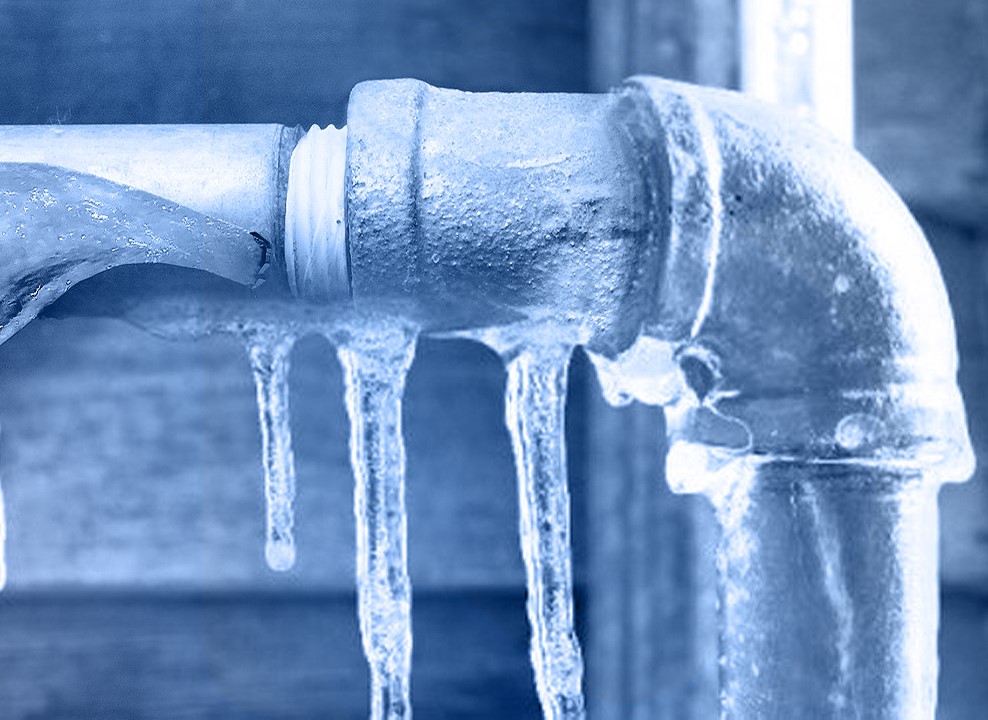Ways to Prevent Frozen Pipes in Cold Weather: Professional Tips
Ways to Prevent Frozen Pipes in Cold Weather: Professional Tips
Blog Article
Right here further down you can find a bunch of good quality advice concerning 6 Ways to Prevent Frozen Pipes.

Cold weather can ruin your plumbing, specifically by freezing pipes. Right here's just how to prevent it from happening and what to do if it does.
Introduction
As temperature levels decline, the risk of frozen pipes rises, possibly leading to expensive repair services and water damage. Comprehending how to prevent frozen pipes is vital for home owners in cool environments.
Comprehending Frozen Pipes
What causes pipes to ice up?
Pipelines ice up when exposed to temperatures below 32 ° F (0 ° C) for expanded periods. As water inside the pipes ices up, it expands, putting pressure on the pipeline walls and possibly triggering them to burst.
Threats and damages
Icy pipelines can result in water supply interruptions, home damages, and expensive repairs. Burst pipelines can flood homes and cause substantial structural damage.
Indications of Frozen Pipes
Determining icy pipes early can prevent them from rupturing.
Exactly how to recognize frozen pipelines
Search for reduced water circulation from taps, unusual odors or noises from pipes, and visible frost on subjected pipes.
Avoidance Tips
Protecting vulnerable pipelines
Cover pipelines in insulation sleeves or make use of warmth tape to shield them from freezing temperature levels. Concentrate on pipelines in unheated or outside areas of the home.
Heating techniques
Maintain indoor rooms adequately warmed, particularly areas with plumbing. Open up cupboard doors to permit warm air to circulate around pipelines under sinks.
Shielding Outdoor Pipes
Yard hoses and exterior faucets
Disconnect and drain pipes garden pipes before winter. Mount frost-proof spigots or cover outside faucets with shielded caps.
What to Do If Your Pipes Freeze
Immediate actions to take
If you suspect frozen pipelines, maintain faucets available to alleviate pressure as the ice melts. Make use of a hairdryer or towels soaked in hot water to thaw pipes slowly.
Long-Term Solutions
Architectural changes
Think about rerouting pipelines far from exterior walls or unheated areas. Include additional insulation to attic rooms, basements, and crawl spaces.
Upgrading insulation
Purchase top quality insulation for pipes, attics, and walls. Correct insulation helps maintain regular temperature levels and lowers the threat of icy pipes.
Conclusion
Stopping icy pipes needs positive measures and quick actions. By comprehending the causes, signs, and safety nets, homeowners can shield their plumbing during winter.
6 Proven Ways to Prevent Frozen Pipes and Protect Your Home
Disconnect and Drain Garden Hoses
Before winter arrives, start by disconnecting your garden hoses and draining any remaining water. Close the shut-off valves that supply outdoor hose bibs and leave the outdoor faucet open to allow any residual water to drain. For extra protection, consider using faucet covers throughout the colder months. It’s also important to drain water from any sprinkler supply lines following the manufacturer’s directions.
Insulate Exposed Pipes
Insulating your pipes is an effective way to prevent freezing. Pipe insulation is readily available at home improvement stores and is relatively inexpensive. Pay close attention to pipes in unheated areas such as the attic, basement, crawl spaces, or garage. Apply foam insulation generously to create a buffer against the cold. You can also wrap your pipes in heat tape or thermostat-controlled heat cables for added warmth.
Seal Air Leaks
Inspect your home for any cracks or openings that could let in cold air. Seal any holes around the piping in interior or exterior walls, as well as the sill plates where your home rests on its foundation. Additionally, make sure to keep your garage door closed unless you’re entering or exiting. Leaving it open creates a significant air leak that can lead to frozen pipes.
Allow Warm Air Circulation
During cold snaps, it’s essential to allow warm air to circulate evenly throughout your home. Leave interior doors ajar to promote better airflow. Open kitchen and bathroom cabinets to help distribute heat consistently around the rooms. If you have small children or pets, be sure to remove any household chemicals or potentially harmful cleaners from open cabinets for safety.
Let Faucets Drip
A small trickle of water can make a big difference in preventing ice formation inside your pipes. When temperatures drop significantly, start a drip of water from all faucets served by exposed pipes. This continuous flow helps prevent the water from freezing. Additionally, running a few faucets slightly can relieve pressure inside the pipes, reducing the chances of a rupture if the water inside does freeze.
https://choateshvac.com/6-proven-ways-to-prevent-frozen-pipes-and-protect-your-home/

I came across that article on How to Prevent Your Pipes From Freezing while doing a lookup on the internet. Sharing is nice. Helping others is fun. Thanks a bunch for being here. Kindly check up our site back soon.
Book Report this page